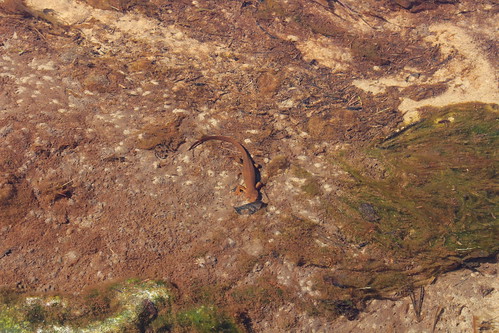Second round of Oregon wolf plan review happens in Portland
Public review of the contentious way Oregon manages gray wolves continues May 19 with a hearing in Portland.
Not surprisingly, a draft plan from Oregon Department of Fish and Wildlife has been criticized by livestock producers and wildlife activists alike. The ODFW Commission will hear testimony and eventually will adopt a five-year management plan. No date for adoption has been set. A first hearing April 21 in Klamath Falls saw 40 people testify.
Department biologists say the draft management plan builds on what they’ve learned over the years. Oregon had no documented wolves when the first plan was adopted in 2005; the state now has a minimum of 112 wolves, including 11 packs and eight breeding pairs. Russ Morgan, ODFW wolf program leader, has described wolves’ population growth and geographic spread as a biological success story.
Livestock producers and other rural residents question that thinking, while urban environmentalists generally favor the return of wolves to the state’s landscape.
The management plan is where those differences get argued.
Oregon Farm Bureau and Oregon Cattlemen’s Association said the draft plan makes it harder for ranchers to protect their animals because it increases the number of confirmed attacks required before allowing lethal control of wolves.
The draft plan requires three confirmed depredations or one confirmed and four “probable” attacks within a 12 month period. The previous standard was two confirmed depredations or one confirmed and three attempted attacks, with no time period set.
The groups also believe ODFW should continue collaring wolves, and should set a population cap for wolves in Oregon.
Groups such as Oregon Wild and Cascadia Wildlands find fault with the plan as well.
They believe Oregon took wolves off the state endangered species list prematurely. They oppose a population cap and plan provisions that might allow killing wolves if deer and elk populations drop, saying that proper habitat is a greater factor in ungulate populations.
They’ve also criticized a draft plan provision that would allow USDA Wildlife Services to conduct livestock depredation investigations for ODFW. Nick Cady, legal director for Cascadia Wildlands, has said the agency is too quick to blame wolves for every attack.
Meanwhile, 10 Oregon counties will distribute $184,039 to compensate ranchers who lost livestock to wolves and to help pay for non-lethal defensive measures.
The Oregon Department of Agriculture allocated the money, which comes from a grant called the Oregon Wolf Depredation Compensation and Financial Assistance Program. It’s intended to compensate livestock owners for actual losses or injuries caused by wolves, for missing livestock and for defensive measures. County-based committees review claims; the counties are reimbursed for their administrative costs as well.
Most of the grant money, about 70 percent of the money, is to help pay for defensive action meant to deter or scare off wolves. Non-lethal measures include removing carcasses and bone piles, putting up fencing or electrified ribbons, hiring range riders, deploying guard dogs, setting up flashing lights and noise-makers, and other methods.
Wallowa, Klamath, Umatilla, Lake and Jackson counties filed claims for confirmed or probable livestock losses. Baker, Umatilla and Wallowa counties filed claims for missing livestock.











